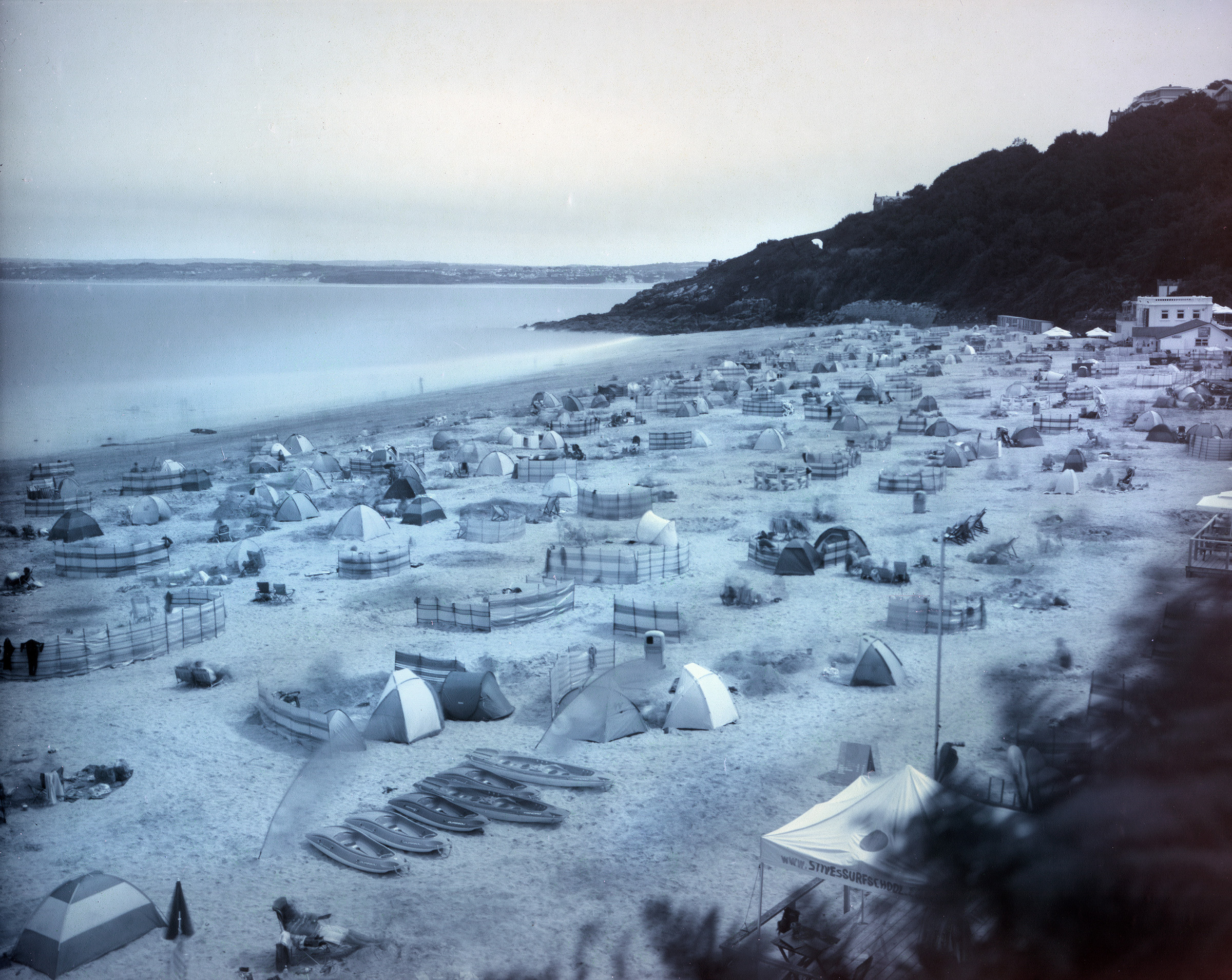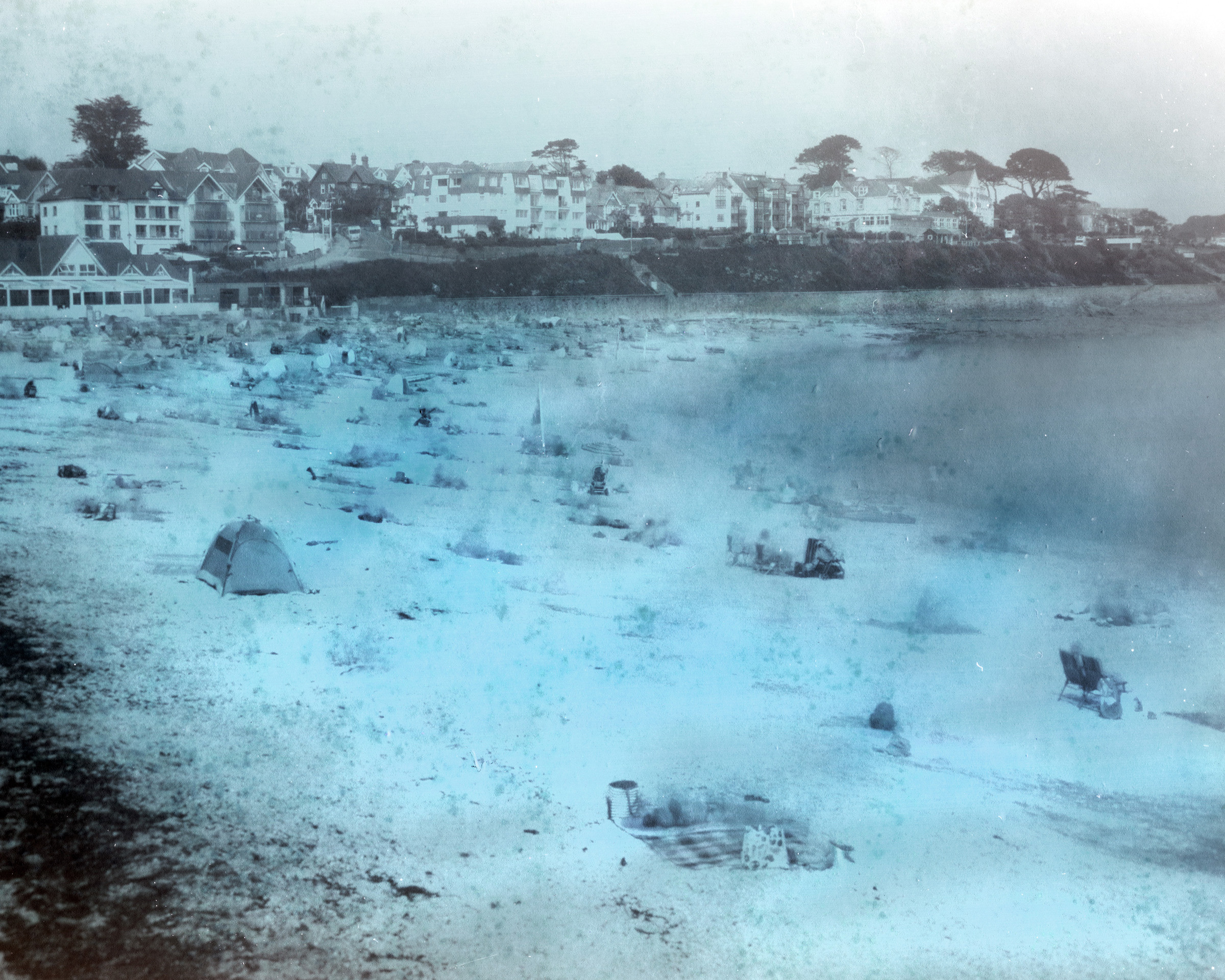







Tides
“When artist William Arnold began documenting the fluctuating tide line near his home in Cornwall, the strange resulting images provided a starting point for a much wider investigation. These images offer an unsettling invitation to consider the effects of fluctuating tides - of tourism, sea levels, populations - in a changeable climate. Raising questions about human impact on the beautiful but fragile Celtic fringes of Europe, Arnold’s work presents a local response with global resonance.”
- Nina Pope & Rhona Dougall (An Tobar, Isle of Mull)
These photographs of popular beaches in high summer Cornwall are photographed using a 5x4" view camera with a continuous exposure of 90 minutes. During that time depending on the state of tide a couple of feet of land is ceded or gained. People arrive; bask, play, swim. In echoes of Louis Daguerre’s shoe-shine boy those determined sunbathers are preserved as ethereal traces, yet the main evidence for the population of these packed playgrounds are the windbreaks, towels and stranded paddleboards each marking a temporary encampment on the sand.
In June 2021, Cornwall had more than 10,290 active Airbnb listings across the county, whilst there were only 69 rental properties available on property site Rightmove.

Porthminster, Cornwall, August 2014

Kynance Cove, Cornwall, August 12th 2021

Praa Sands, August 25th, 2021

Porthtowan, Cornwall, August 4th, 2021

Gunwalloe, Cornwall, August 25th 2021

Porthcurno, August 13th, 2021

Perranporth, Cornwall, August 10th, 2021

Gyllyngvase, August 23rd, 2021
All photographs are digitally derived positives from a 5x4” paper negative exposed in camera for 90 minutes.